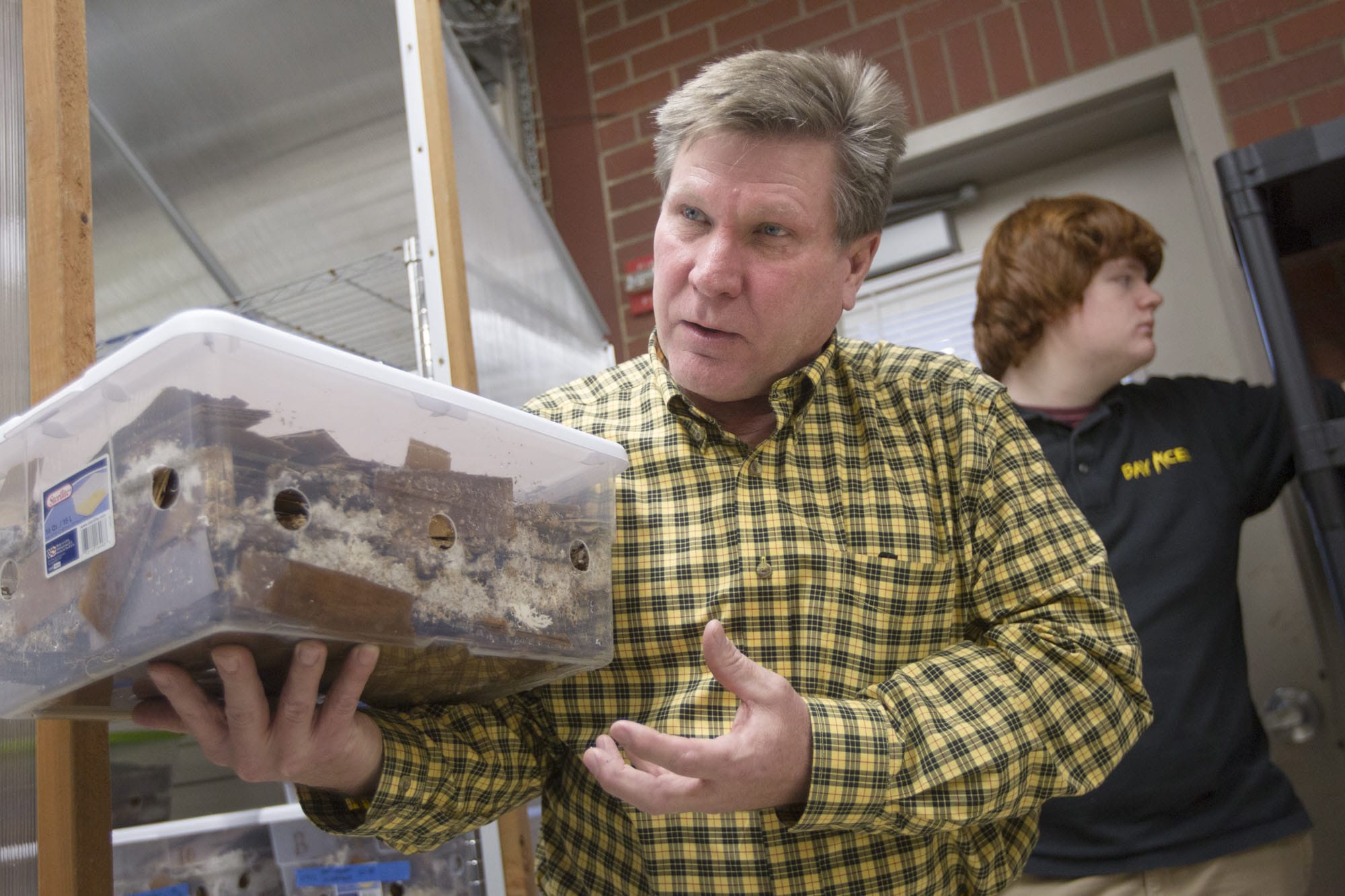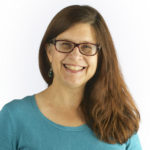Mushrooms don’t reproduce with seeds, but via spores that germinate to produce interwoven structures called hyphae. Masses of hyphae are the mycelium.
Hudson’s Bay High School named state winner and will receive $20,000 in technology for classrooms.
What’s next: Students will produce video showcasing their project’s solution and may advance to next level.
Learn more: www.samsung.com/us/solvefortomorrow/contest
Hudson’s Bay High School Architecture, Construction, Environmental Services Magnet:
http://bay.vansd.org/academics/magnet/ACES.html
Lifting the lid from a plastic container, Cedric Hitzeman broke off a chunk of waste cardboard and paper decomposing with the aid of mushrooms.
Hitzeman, 16, is one of three Hudson’s Bay High School students working with horticulture teacher Steve Lorenz to reclaim paper waste by inoculating it with mushroom mycelia. Mycelia is the root system of mushrooms, Hitzeman explained as he pointed to the white layer growing on the cardboard.
This week, Lorenz and his students were named the Washington winners in the Samsung Solve for Tomorrow contest for their work. In addition to Hitzeman, a junior, seniors Brittney Hauff, 17, and Kasandra Wielenbeck, 18, are working on the project.
Students in the school’s Architecture, Construction and Environmental Sciences program and the National FFA Organization are working on the project to turn the school’s paper and cardboard waste into mushroom compost for gardens. The process takes more than a year.
Lorenz will receive a Samsung technology package valued at $20,000. In January, Lorenz and his students will work with video production teams at the school and the district office to produce a three-minute video showcasing the project. They also will produce a model showing large-scale use of the project.
“It’s layered like lasagne,” Hitzeman said. “As long as you keep it moist and humid, it just keeps multiplying. We drilled holes in the plastic to allow more airflow to kick-start the growth.”
Each week, the school recycles 8 cubic yards of paper waste through traditional recycling.
“We’re focusing on reducing Hudson Bay’s paper waste,” Lorenz said.
Currently, 4-gallon containers that hold one-half of a cubic foot of material are stacked on a wire shelving unit in Lorenz’s classroom. Ramping up to a large-scale operation, Lorenz said they plan to use much larger containers that hold 5.4 cubic feet.
“In a nutshell, it’s a pretty simple process,” Lorenz said.
Students salvage cardboard from the school trash bin, shred it, put it in iodine for one or two days to clean it, dump the iodine, sort the cardboard into plastic bins, then add the mycelia. After 45 days, pinheads — miniature mushrooms —begin to grow.
The oyster mushrooms produced can be sold in growing kits, or as a food source prepared by the district’s culinary students or for large-scale recycling.
Mushroom burgers
This week, Lorenz asked the culinary arts teachers at Fort Vancouver High School if their students could develop vegetarian mushroom burgers with the oyster mushrooms produced by Hudson Bay’s project.
“What an idea! We’re the perfect match for this,” said Dave Angell, who teaches the Vancouver district’s only culinary arts program at Fort.
“We’ll make it into a special project and teach about mushrooms,” Angell said. “Our culinary arts students will work in teams to develop recipes and practice making mushroom burgers. Then we’ll test the recipes and start refining the product. It will take time. It’s a great beginning.”
Although oyster mushrooms are available in grocery stores, they cost much more than the more pedestrian crimini mushrooms. Fred Meyer sells oyster mushrooms for $15.18 per pound.
Solve for Tomorrow
The Solve for Tomorrow contest honors teachers who inspire students, improve their communities, and foster science, technology, engineering and math education.
From the contest’s state winners, 15 national finalists will be selected. Their videos will be placed online for public voting. All national finalists receive a minimum of $35,000 in technology for their schools. The 15 national finalists will be narrowed to five national winners, who each will receive a $120,000 technology grant.
Regardless of whether Lorenz and his team advance, he says they’ll continue with the project. “There’s still so much research to do. We want to show this model where people can produce a food source from waste. Imagine the global implications for this.”




